Editorial

Dear Colleagues,
Welcome to our latest edition and as this is hot-on-the-heels of the IPEC Europe Board meeting, we’ve been able to capture a few highlights for you here. After the summer break it’s time to kick off activities to ensure we meet our 2018 goals and indeed, prepare for next year. Effectively we have only three months left so we task out committees and working groups to make their best efforts to close out projects and develop plans for 2019 and beyond.
You may recall that in recent years IPEC Europe set out its vision in our Agenda 2020 and while it’s hard to believe, very soon that landmark will be realized. With that in mind, an important task for the board is to look at our future and map out the next stage of our journey. While the Board will pool their creative thoughts on what this should look like, we would very much appreciate your ideas on where we as an association should and need to go. So don’t hesitate to provide your insights to help the Board in their deliberations. email, call, write whatever, we’re always here to listen and really welcome your input!
The remainder of this year sees quite a lot of outreach activities for IPEC Europe as mentioned in this newsletter and also, the IPEC Federation holds its annual meeting with the Pharmacopoeial Harmonisation Group (PDG) in Strasbourg on 3 October. We continually come back to the subject of harmonization for excipients and where to take it next. It’s been mentioned before but making the progress everyone seems to wants remains a challenge and as I reported in August, we very much need a new vision and a new direction. Working with PDG is one piece of the puzzle and I look forward to reporting back to you that at least in this one area, we can make some progress through this important collaboration.
One very important feature I’d like to draw your attention to is the launch of our 2019 Forum, which will take place on 31 January in a new location for IPEC Europe, namely the Republic of Malta. Malta has such a richly diverse history it seems a great location for an association such as ours in which to convene. Being a country with such a strong identity derived from a variety of influences is very much of how I like to think of IPEC Europe and hopefully will lead to some great discussions. So, as the article say ‘Please hold the date’ and I look forward to seeing many of you there!!!
Until next month,
Frithjof Holtz
IPEC Europe chair
The Board gathers in Brussels! Some highlights
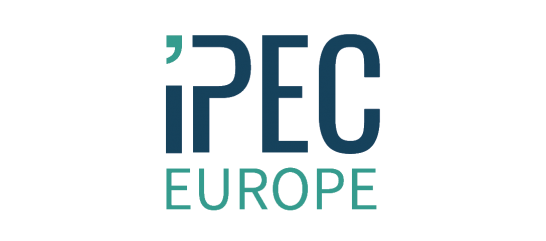
The penultimate Board meeting of 2018 was held on 12 September. One topic was to make arrangements for the November assembly which will include a focus on IPEC Europe’s future, in terms of strategy, infrastructure and budget.
Rebranding initiatives are nearing completion. A new mini brochure to support recruiting activities was shared and the website ‘make over’ proposals in line with our new corporate design. Watch out for more news on its launch.
While the EU GDPR requirements are now a reality, new legislation is coming for asbl’s in Belgium where not-for-profit associations such as IPEC Europe will effectively be regulated as companies. The Secretariat are busy assessing the impact this will have as are the many other associations such as ours located here in Brussels.
Arrangements for several important events were reviewed, most significantly the 2019 Forum and AGM in Malta and before then, the APV/IPEC Europe Conference, Cologne (18 & 19 Sept) CPhI, Madrid (9 - 11 Oct) and our next webinar (GMP Guide) where IPEC Europe will be present!
Collaboration with other stakeholders continues and joint initiatives and specific projects are under development.
As you can see, a lot is going on so thanks to the many of you for your valuable contributions!
IPEC Federation meets in Beijing
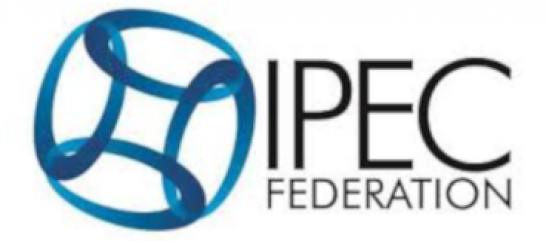
As in 2017, the IPEC Federation played a significant role in developing IPEC China’s ExcipientFest Asia programme held in July. As many Federation representatives, including IPEC Europe’s Vice President Frank Milek were featured as presenters, the IPEC Federation extended Board took the opportunity to discuss progress with its 2018 objectives. The agenda covered a review of the Strategic Plan where certain initiatives were reconfirmed as high priority items and which needed focus to make the progress required. Essentially, the priorities were confirmed as highlighted in what’s called the ‘bubble chart’.

Certainly, a refocus on Harmonisation Strategy and the completion of position papers on Atypical Actives and Data Integrity remain important. It was reported that the document developed by IPEC Europe’s GDP Committee on Supply Chain Security of Pharmaceutical Grade Excipients is well on the way to completion. There are many guidelines either being created or under revision presenting a heavy workload beyond what was anticipated but it was agreed to carry on and that further calls for volunteers to provide the expert inputs needed will be made. The list is long and more titles may well be added for 2019 but meanwhile, the following are in various stages of activity:
- Safety guideline
- Qualification of Excipients for Pharmaceutical Use
- Risk Assessment Technical Report (with PDA)
- Validation guide
- Excipient Information Package
- GMP/GDP Guide & Audit Guide
It was agreed that in 2019, each IPEC association’s local events will include some Federation-designated topics with standard content to facilitate the communication of consistent, core messages. IPEC is to investigate the registration of a Federation trademark in regions where an IPEC association exists. Each association provided in advance summaries of its own local activities and any specific needs of the Federation. There have been successes in Argentina, Brazil and Mexico to collaborate with industry associations and regulators on requirements for excipients.
If you would like to know more about any of the subjects mentioned, please contact the Secretariat.
GDP Committee update

IPEC Europe’s GDP committee met in Brussels on 28-29 August, with topics of discussion including the transportation conditions for excipients, the revision of the 2011 IPEC GDP Audit Guide for pharmaceutical excipients, and supply chain security, amongst others.
The committee has agreed to start work on a new transportation document, which could cover areas such as temperature, access control, duration of transport and qualification of forwarders, with the aim of eventually having it adopted as an IPEC Federation position paper. The first steps were also taken towards the revision of the GDP Audit Guide to bring it into alignment with the ISO 9001:2015 structure, while a position paper on supply chain security (see our article here) advanced to the final stages of review.
The next committee meeting will be held via a conference call on 28 September.
Save the date! 2019 Annual Forum and AGM

IPEC Europe is pleased to announce that the 2019 Annual Excipients Forum will take place on Thursday 31 January 2019 at the Westin Dragonara Resort in St Julian's, Malta.
The IPEC Europe Annual Forum is an excellent opportunity to network and learn more about the latest developments on pharmaceutical excipients. The programme will cover many "hot" topics and will include best practices and insights that can help your company adapt to current and future challenges.
For IPEC Europe members, Committee meetings will take place in the afternoon of Wednesday 30 January.
The Annual General Meeting (AGM) of IPEC Europe will take place on the day after the Forum, Friday 2 February.
Learn more on www.ipec-europe.org and follow us on LinkedIn to be the first to discover the programme and register for the Forum!
Introducing Stefano, IPEC Europe's newest staffer

IPEC Europe is pleased to announce that Stefano Luppino joined the Secretariat as a Communication assistant.
Stefano joined IPEC Europe in May 2018 to focus on media, corporate communications and events. At IPEC, he uses his creativity and design skills to help people become more informed about excipients in medicines.
He holds a BA in International and Diplomatic Sciences from University of Trieste and an MSc in International Public Management & Policy from Erasmus University Rotterdam.
In his spare time, he enjoys exploring new spots and trying new food.
IPEC Federation representation on ICH Q13
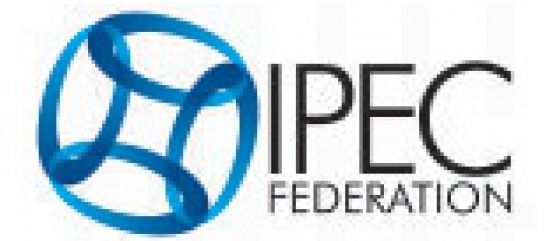
During the International Council for Harmonisation (ICH) meeting in Kobe, Japan, June 2 – 7, the Assembly agreed to begin work on three new topics for ICH harmonization:
- Analytical Procedure Development and Revision of Q2(R1) Analytical Validation (Q2(R2)/Q14);
- Continuous manufacturing (Q13);
- Clinical electronic Structured Harmonised Protocol (‘CeSHarP’) (M11).
According to a recent press release, work will now begin on developing formal concept papers and work plans for these topics.
Continuous manufacturing is a significant topic for IPEC members globally, and the ICH management committee has advised the IPEC Federation that they have accepted IPECs request to participate in the new ICH Q13 Topic on Continuous Manufacturing. The IPEC Federation was granted observer member status at ICH in 2016 and IPEC leaders have been actively participating in ICH activities through the official IPEC Federation representative, Janeen Skutnik-Wilkinson.
We are pleased to announce that Dr. Brian AC Carlin, Director QbD/Regulatory, DFE Pharma and a long time IPEC-Americas volunteer, will be the representative to the ICH Working Group. Periodic updates on the progress of this important initiative and landmark success for IPEC will be provided as appropriate.
Last call for EXCiPACT awareness course
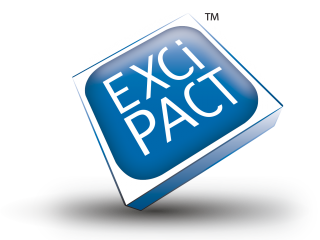
A one-day awareness course covering all aspects of the EXCiPACT Certification Scheme will be held in Brussels on 26 September, so move quickly if you want to secure a place.
The course is suitable for those in the pharma sector who wish to learn more about the EXCiPACT at a technical and implementation level, and it is in a new format for the organization that complements its intensive two-day auditor training course. The course costs €600 pp +VAT and you can contact info@excipact.org to register.
Meanwhile, it’s been a busy few months for EXCiPACT, with recent auditor training courses in Shanghai, Brussels and Mumbai – which are mandatory for those aspiring to become a registered EXCiPACT auditor – attracting a total of more than 20 delegates. It also exhibited and presented at Making Pharmaceuticals UK in April and shared a stand with Certiquality, its Italian certification body, at the annual AFI meeting in Rimini in June.
Following a successful EXCiPACT workshop in Shanghai in May, additional workshops are due in Mumbai in November, as well as in Coventry, UK and the in New Jersey, USA in April and May 2019, respectively.
EXCiPACT’s senior advisor Tony Scott tells Excipients Insight that the triennial recertification of four of its registered certification bodies is underway. Bureau Veritas China completed recertification recently and three more are planned in the next few months. At last count 86 certification audits have been completed.
IPEC Europe calendar

| Group |
Q3/4 2018 |
| IPEC Europe Board |
12 September,
27 November |
| GDP Committee |
28-29 August (Brussels),
29-30 October (Germany) |
| Pharmacopoeial Review & Harmonisation Committee |
TBC |
| Quality & Regulatory Affairs Committee |
26 September (telecon),
28 November (Brussels) |
Update: Novel excipients - why a master file system could remove regulatory obstacles

In the last 20 years, the number of novel excipients that have successfully been brought to market has been vanishingly low. While there is no shortage of high-quality R&D work on new excipients that could improve the quality, safety and ease of manufacture for medicinal products, regulatory challenges make it hard for pharmaceutical manufacturers to use them in their products.
The main reason for this is that novel excipients – by their very nature – have not been through any prior regulatory assessment for pharmaceutical use, so drug developers cannot reference pharmacopoeias or other ingredient compendia, or earlier drug approvals. In Europe there is still no simple way to demonstrate the safety and efficacy of a new excipient, other than to win approval of its use as part of a medicinal product via the usual marketing authorisation application (MAA) procedure.
What is lacking is a regulatory mechanism for independent review and qualification of new excipients. For many years, IPEC Europe has advocated the need for a master file system in the EU that can be used for excipients, but with Europe increasingly out of step with the rest of the world in this area the organization believes it is time to raise the issue once again.
Many countries, including all of the IPEC Federation regions except for Europe, have master file-type systems open to excipients ,” notes Kate Denton (pictured), who represents Albumedix Limited on IPEC Europe’s Quality and Regulatory Affairs Committee.
While US, Canada, Japan and most recently China have established excipient master file (EMF) systems, many other regions including Australia, New Zealand, India and Korea allow a customised approach to submitting proprietary manufacturing information on excipients directly to the regulatory authorities. However, in Europe there is no way to do this to use an excipient in a centrally-authorised product, though some EU national competent authorities may be willing to accept such information on a case-by-case basis.
Therefore, the EU is increasingly looking like an outlier on this important issue - and as a result - "the needs of both developers and users of novel excipients are not met in Europe compared to other global regions,” she adds. The situation means new and improved treatments are reaching patients in other countries that are not penetrating the EU market.
In jurisdictions that operate a formalised system for excipient master files or their equivalent, a pharmaceutical manufacturer has two ways to apply to use a novel excipient in a medicinal product. It can file the supporting data as part of a marketing application or alternatively reference a master file or equivalent which the excipient supplier has already lodged with the regulatory agency.
Most excipients are used in pharmaceutical products in Europe on the strength of a Certificate of Suitability (CEP) that can be submitted to the European Directorate on the Quality of Medicines and Healthcare (EDQM) in order to demonstrate that the excipient meets the monograph requirements laid out in the European Pharmacopoeia (Ph. Eur.). However this approach is not possible for a novel excipient.
“IPEC Europe recognises that an EMF would not necessarily be of value for compendial excipients for which a CEP can be obtained and therefore it envisages its use mainly by novel excipient manufacturers,” says Denton.
She would like to see a system where the EMF contains a closed portion that could be accessed only by the regulator, with an open part provided to the excipient user, namely the marketing authorization holder (MAH), similar to the system that is already used for active pharmaceutical ingredients (API), i.e. active substance master files (ASMFs). IPEC Europe believes that, as for APIs, such an approach would allow the MAH access to all the information needed to take full responsibility for the excipient’s use in a drug product, whilst also helping the supplier protect confidential information about its product. Master file systems are used successfully in this way in many other world regions as discussed above.
“Given that data requirements for active substances and novel excipients are equivalent, and that the European legislation specifies that information in relation to a novel excipient must be supplied according to the active substance format, IPEC Europe believes that novel excipients should be treated the same in terms of their assessment procedure and that submission via a master file procedure should be possible,” according to Denton.
“The rationale for allowing manufacturers of active substances significant advantages that are not open to novel excipient manufacturers is unclear.”
An EMF system would also allow the regulator to have all the complex information on the excipient in one centralised location where it can be reviewed in conjunction with drug licence applications. That would reduce the need for duplicative assessments of the same information if the excipient is cited in more than one marketing application.
IPEC Europe also believes that as it stands EU reviewers may not have access to the same level of information on the excipient as their counterparts in other countries where suppliers can submit master files. That is because excipient manufacturers seeking to protect their intellectual property may not be able to hand over confidential details to the MAH. This could have a negative impact on the EU assessors’ ability to ensure the safety and quality of the finished pharmaceutical product.
“Implementing an EMF system in Europe by extending the use of the ASMF to novel excipients would benefit a large proportion of the pharmaceutical industry—excipient manufacturers and users alike—by reducing the barrier to innovation in this area and bringing Europe in line with other global markets,” concludes Denton.
“This would encourage the development of improved drug products thereby increasing EU citizens’ access to better safer medicines.”
IPEC Europe is drawing up a position paper to reflect that viewpoint. If you are an IPEC Europe member and would like to learn more, or to get involved in the EMF project, please contact the Secretariat.
Note: This is an updated version of an article that originally ran in Excipients Insight April 2018 - Ed.
Revision to ICH Q3D on cadmium published
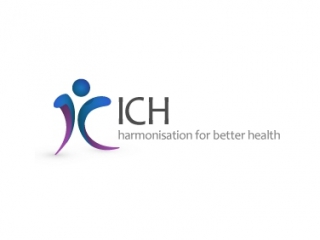
The International Council for Harmonisation (ICH) has completed a draft revision to its ICH Q3D guideline related to cadmium permitted daily exposure (PDE).
The guideline revision (R1) is focused on an error correction of the PDE for cadmium by the inhalation route. Specifically, the original PDE for cadmium by inhalation was identified as 2 µg/day , but should have been 0.2 µg/day, a level 10-fold below that identified in the finalised guideline. The revision reached Step 2b in May 2018 and entered the public consultation period.
A Step 2 presentation has been published by the Expert Working Group to discuss the change.
MHRA already losing contracts as Brexit looms

The UK Medicines and Healthcare products Regulatory Agency (MHRA) role in EMA operations has been dramatically downgraded ahead of the Brexit transition period, it has emerged.
An Observer article reports that the MHRA was given just two contracts to serve as the lead assessor on new drug applications out of an estimated 36 pitched in 2017/18, and will not be in the running for any more, because the timeframe for completing reviews will extend beyond the date the UK officially leaves the EU.
The MHRA has in recent years been a major contributor to the EMA’s activities, handling up to a third of applications, and is also having existing contracts taken away to be completed by EU27 regulators.
In April, the EMA revealed it had redistributed more than 370 centrally authorised products to new rapporteurs and co-rapporteurs from the EU27, plus Iceland and Norway, that had been appointed by the scientific committees to coordinate the evaluation of a medicine to MHRA staffers.
At the time, the EMA said that despite post-Brexit transition plans, the MHRA could no longer engage in centralised regulatory procedures after 29 March 2019.
Losing the MHRA’s capacity and expertise is also reported to be contributing to a challenging period for the EMA, which is struggling with a higher-than-expected reduction in headcount as it prepares to move from London to Amsterdam and has had to scale back its workload.
UK ‘no-deal’ preparations
Last month, the UK government published advice on measures that should be taken in the event of a no-deal scenario with the EU, including in the healthcare sector, recommending that pharma companies stockpile at least six weeks’ worth of drugs to prevent shortages.
The guidance also confirms that the MHRA will handle UK marketing applications for new medicines if an agreement is not reached by 29 March, in other words “an initial market authorisation application will need to be submitted to the MHRA and will go through a national assessment.”
On the topic of batch testing – the process of confirming that every batch of medicines has the correct composition through lab testing – the MHRA says it will continue to accept tests done on commercial and investigational products from a list of EU and European Economic Area (EEA) countries, to ensure a smooth supply. Testing of commercial products from third countries with which the EU has a mutual recognition agreement will also be accepted.
EDQM launches new version of Know-X falsified medicines database

The European Directorate on the Quality of Medicines and Healthcare (EDQM) has launched a revised version of its Know-X database.
The Know-X project – which is jointly carried out by the Official Medicines Control Laboratories (OMCL) Network and the EDQM’s Committee of Experts on Minimising Public Health Risks Posed by Falsification of Medical Products and Similar Crimes (CD-P-PH/CMED) – is designed to improve interaction between the analytical and enforcement actors involved in the fight against falsified medicines and medical devices.
The latest version “addresses the feedback received from users and most importantly, aims to facilitate more harmonised data entries for both OMCLs and health and law enforcement authorities.”
The EDQM created the database in 2014 to collect cases of falsified medicines and medical devices that are detected in Council of Europe (CoE) member states.
According to the organisation, the tool “supports officials by providing a basis for the exchange of information; it encourages cooperation between health and law enforcement authorities and it also allows for exchanging analytical information on falsified medicines testing within the network of OMCLs.”
Access to the Know-X database is secure and restricted to members of the OMCL Network and to officials in competent authorities within CoE member or observer states who work on falsified medical products and similar crimes.
FDA publishes final elemental impurities guidance

The US Food and Drug Administration (FDA) has published its final guidance on Elemental Impurities in Drug Products, finalising a draft document published in July.
The new guide is designed to be consistent with implementation of International Council for Harmonisation (ICH) guidance for industry Q3D Elemental Impurities. It makes recommendations on:
- How applicants submitting new drug applications (NDAs) or abbreviated new drug applications (ANDAs) for non-compendial drug products should control elemental impurities as described in ICH Q3D;
- How manufacturers of compendial drug products that are not marketed under an approved NDA or ANDA can comply with US Pharmacopeia (USP) General Chapters <232> Elemental Impurities – Limits and <233> Elemental Impurities – Procedures.
- How holders of NDAs or ANDAs for compendial drug products should report CMC changes to FDA to comply with General Chapters <232> and <233>.
- How manufacturers of non-compendial drug products that are marketed without an approved NDA or ANDA should control elemental impurities.
“ICH Q3D recommends that manufacturers conduct a product risk assessment by first identifying known and potential sources of elemental impurities,” says the guidance.
“Manufacturers should consider all potential sources of elemental impurities, such as elements intentionally added, elements potentially present in the materials used to prepare the drug product, and elements potentially introduced from manufacturing equipment or container closure systems.”
Recommended reading

Inactive ingredients, active risks
The inactive ingredients in medicines can pose risks. Who is watching over this corner of the pharmaceutical world?
Scientific American
Diverging regional excipient regulations are creating problems for excipient manufacture, distribution and use globally
A review of the way excipients are regulated by agencies around the world reveals that regional regulations continue to proliferate and the differences are creating problems for the manufacture, distribution and use of excipients globally.
IPQPubs.com
Vets seek flunixin alternative
The immediate suspension by the VMD of eight flunixin painkiller drugs containing the excipient diethanolamine (DEA) has left veterinary professionals seeking alternatives.
Pig-World.co.uk
Novel excipients, DMFs, and atypical actives among pressing issues on IPEC-Americas’ front burner
Novel excipients, drug master files (DMFs), and atypical actives are among the pressing issues on which the International Pharmaceutical Excipients Council (IPEC) is actively engaged with the major regulatory agencies and standards organizations around the world.
IPQPubs.com
Events calendar

Here is a round-up of forthcoming events of interest to suppliers and users of excipients. Please let the IPEC Europe Secretariat know if we've missed one.
CPhI Worldwide
Madrid, Spain - 9-11 October, 2018
More information here.
|